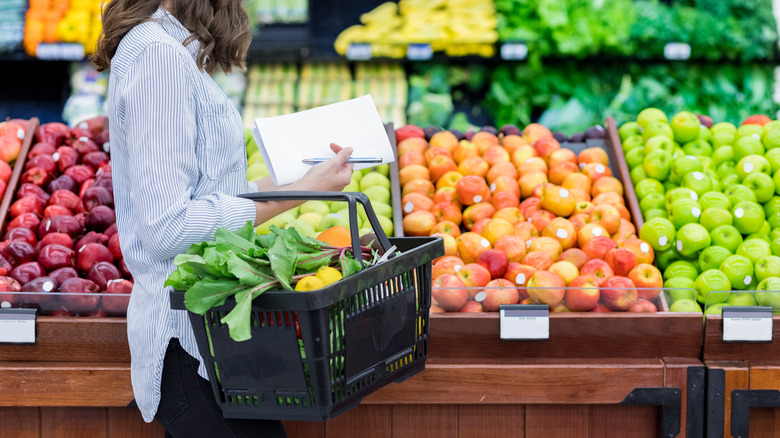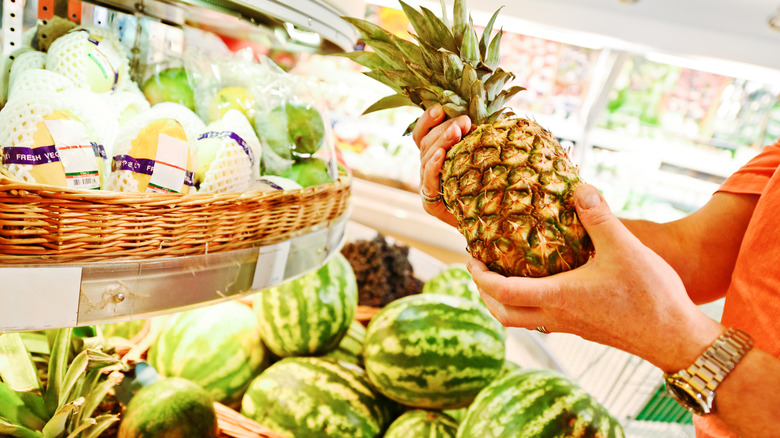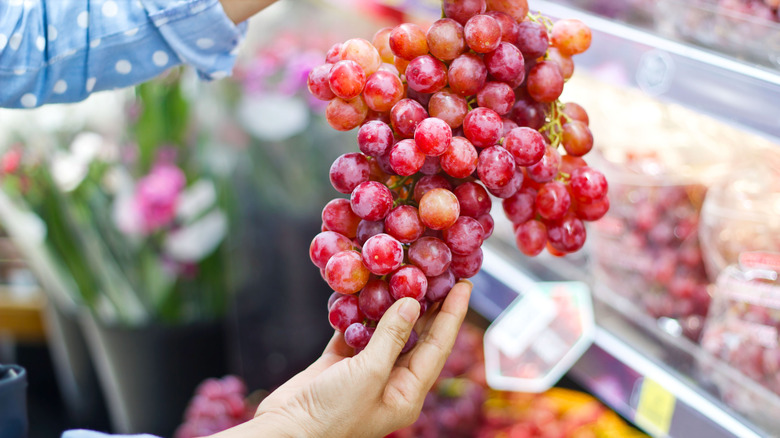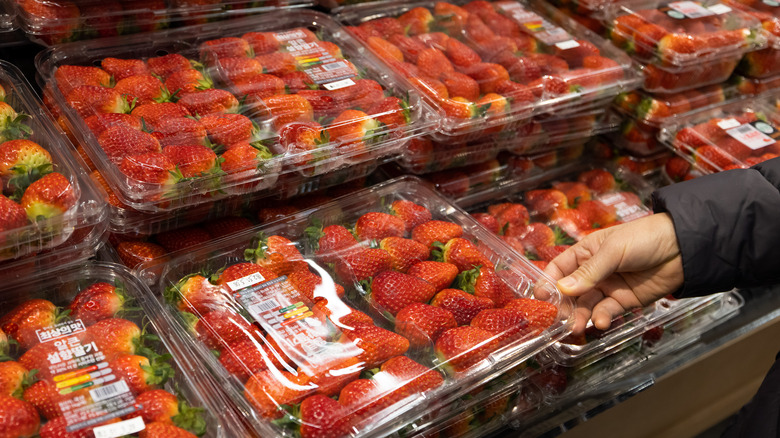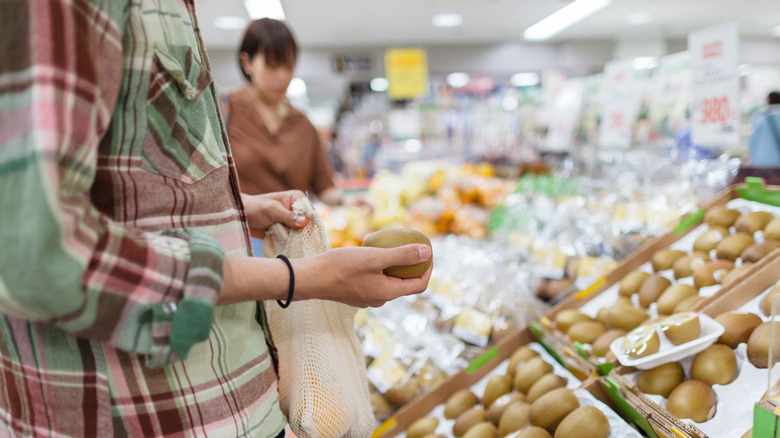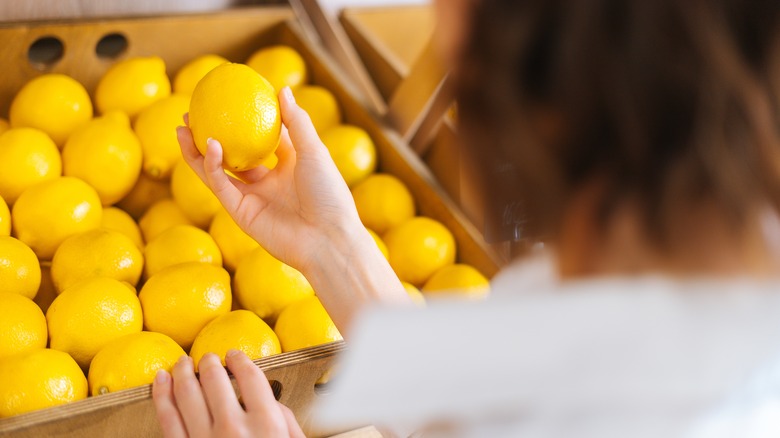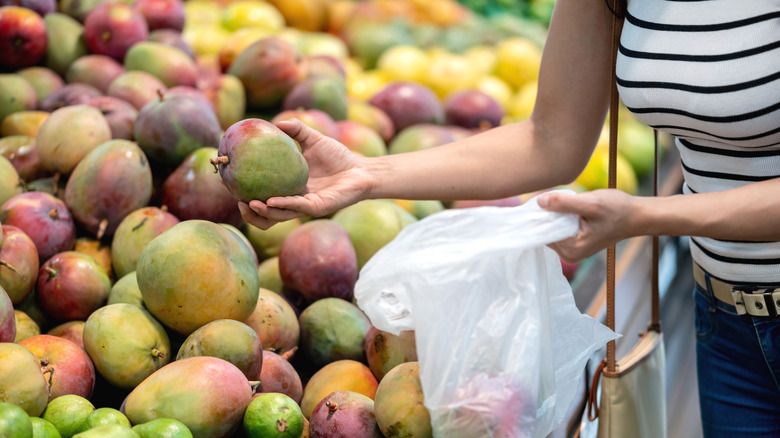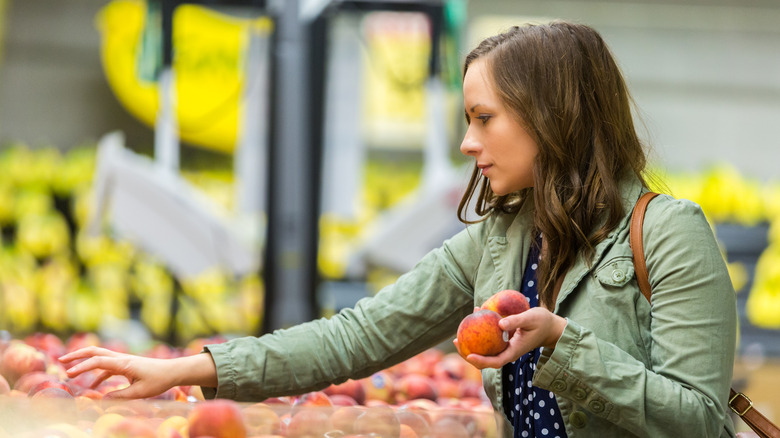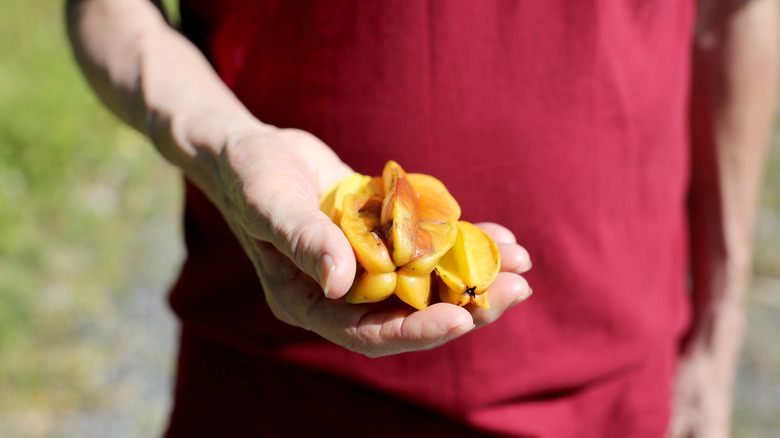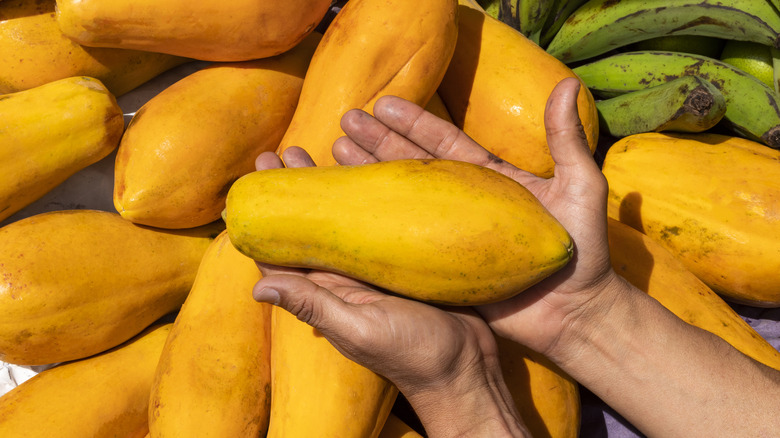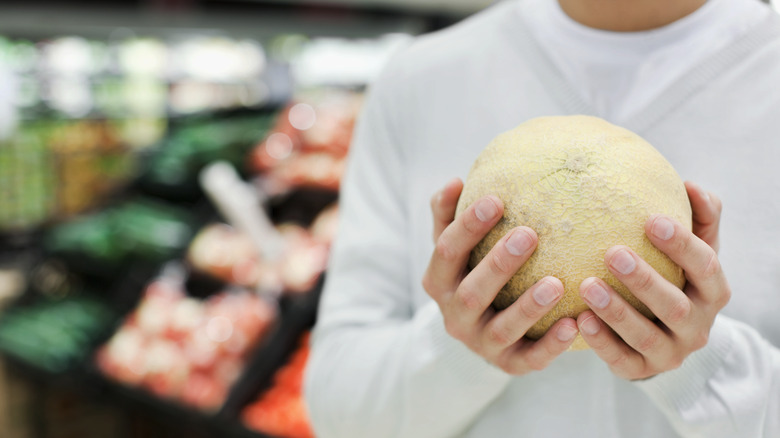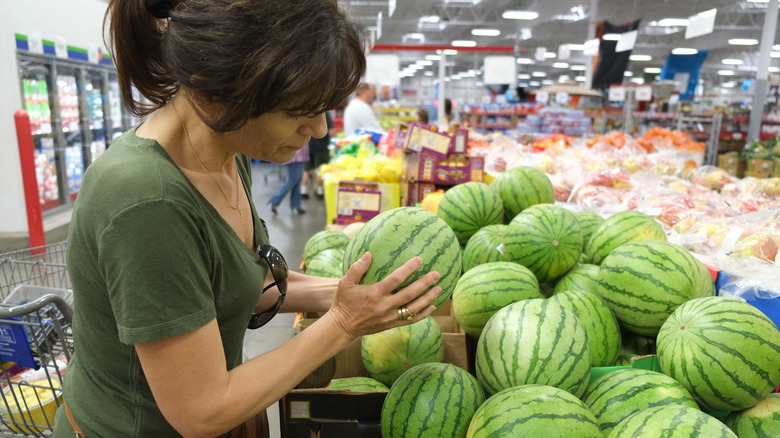13 Simple Tricks To Pick The Best Fresh Fruit Every Time
The ritual of shopping for fruit is a quintessential part of every grocery run. As you venture into the produce section, you are met with a vast spectrum of options. Neatly organized rows of apples, towering stacks of watermelons in hefty corrugated cardboard boxes, and the radiant range of citrus fruits are just a fraction of what's on offer. This vibrant tableau, however, has its complexities. Consider the humble apple with varieties lined up in a row can differ tremendously in taste and texture, with the ripeness of each fruit adding yet another layer of variability.
Navigating this fruitful labyrinth requires a well-formulated strategy. The key to this challenge lies in understanding how to discern the perfectly ripe and ready-to-eat fruits from those underripe or overripe. Mastering this skill can be the difference between a disappointing culinary experience and the joy of savoring a piece of fruit at the peak of its flavor.
Initially, you may feel like a novice navigating through a puzzling maze, but in no time, you'll be traversing the produce aisle with the ease and precision of a seasoned botanist. Each grocery run will morph into a rewarding expedition as you confidently select the crème de la crème of the crop, consistently bringing home fruit at its flavorful zenith and ready to be relished.
Watch out for coloring on apples
The hue of an apple can indeed be a clear indicator of whether it's ready to be savored. When picking out apples, specifically red ones, look for a blend of red and pink on its surface. These shades suggest that the apple has received ample sunlight — crucial to its ripening process — and should now be in an ideal state for consumption.
If you stumble upon an apple that is predominantly red with smatterings of green patches, don't be deterred. While it might not win any beauty contests, it's still palatable. It might be less sweet, but worth the bite.
Lastly, if all you have on hand are apples that aren't quite ripe, don't despair. Even if they're a little on the green side, there's always the option to sweeten them up and add them to a pie. Their aesthetics become less important when they're part of a tasty dessert ensemble. The heat from baking can help bring out their sweetness, transforming those less-than-perfect apples into a delicious treat.
Smell the bottom of your pineapple
To discover a deliciously ripe pineapple, apply your senses more unconventionally: Turn it over and smell the bottom part of the fruit. If you detect a subtle sweetness in the air, you've found a ripe pineapple ready for your enjoyment. Conversely, an unusual, vinegar-like aroma signals that the pineapple has crossed the threshold of ripeness and has entered a stage where it would no longer offer a pleasant taste.
Pineapples don't ripen significantly post-harvest, so your nose is a trusty tool to determine whether the fruit in front of you is a good pick. But when your olfactory senses are on the fence, employ your vision. A pineapple with a golden-yellow hue is more likely to be ripe, whereas greener ones are typically underripe. Remember that finding the perfect pineapple may take a bit of effort and trust in your senses, but the reward — a juicy, tropical treat — is well worth all of your efforts.
Pay attention to the grape stems
As tempting as it might be to taste-test grapes before purchasing, etiquette suggests otherwise. So, how to determine the ripeness without a quick nibble? Using your keen observational skills is the easiest way to pick out some perfectly ripe grapes.
Grapes should have healthy plumpness and be free from wrinkles. Their skin should be taut, reflecting the juicy fruit inside. If they appear shriveled or puckered, chances are they're past their prime. As for the stems, look for ones that are still green and flexible. These are signs of freshness and indicate that the grapes are still in their prime. The grapes should be firmly attached to these stems, too. A firm attachment suggests that the grapes were harvested recently and are ripe for eating.
While brown stems might give an aesthetic appeal, don't let them misguide you. Brown stems are often an indication that the grapes have been off the vine for a while and are possibly nearing the end of their flavorful life.
Flip over berries and test for sticking
Selecting berries that will stay fresh in your refrigerator for an extended period can indeed feel a bit like a lottery – a game of luck that requires keen observation. Just like with other fruits, you'll have to rely on your senses to identify the best berries.
To find fresh berries at the grocery store, tart by scrutinizing the contents of the fruit container, keeping an eye out for any signs of mold. Even a single moldy berry can be a harbinger of more to follow, as mold can spread quickly among these delicate fruits.
After your preliminary inspection, proceed to the turn test: Flip the berry container over and watch what the berries inside do. If any berries stick to the bottom, that's a red flag. Excess moisture can cause berries to stick, which is not a good sign as it can lead to premature molding. If the berries slide freely, however, that's a good indication there isn't excessive moisture in the container, and the berries are more likely to last longer.
Look for kiwis with firm skin
Whether you enjoy eating your kiwis with the skin on or peeled off, the state of the skin is crucial when choosing the best kiwis at the store. Amidst the collection of these fuzzy fruits, you should select one that has unblemished skin and a firm yet slightly yielding feel.
Test it gently: Apply a bit of pressure to the kiwi. If it gives slightly under your touch, you've likely found a delicious and ripe kiwi. A ripe kiwi should have a slight give to it, much like a ripe peach or avocado, but it shouldn't be mushy.
If a kiwi feels rock-hard, it might be best to leave it at the grocery store. Such a kiwi needs time to ripen, and you should be prepared to give it that time at home. Keep it away from direct sunlight and heat sources, as these can cause the kiwi to overripen.
Search for heavy lemons
When you're out shopping for lemons, it's crucial to physically interact with them. Pick them up and feel their weight. The best and most ripe lemons will have a certain heft for their size. This weightiness is a testament to the juicy goodness hidden beneath their bright yellow skin, indicating that you've got a prime lemon candidate in your hands.
Now, perform a gentle squeeze. A ripe lemon should be firm but yield slightly to pressure, much like a well-inflated balloon. This balance between firmness and flexibility is the sweet spot, hinting at the perfect degree of ripeness.
Don't rely solely on your sense of touch, though; engage your sense of smell as well. Like pineapples, lemons should exude a delightful, citrusy fragrance when you bring them close. If the aroma entices you, you're on the right path to a flavorful fruit.
Visually, seek out lemons that boast a bright, even yellow hue. Consistent coloration is a good sign of ripeness and health. Keep an eye out for any visible signs of mold, deep discoloration, or bruising. These could be signs that the lemon is past its prime or damaged.
Give mangos a slight squeeze
Selecting mangoes might seem like a color-based task, as the brightest fruits often seem the ripest at first glance. However, when it comes to mangoes, you shouldn't rely on color when picking out mangoes. Contrary to popular belief, the hue of a mango speaks more to its variety or type than its degree of ripeness. Rather than putting all your faith in color, focus more on how the mango feels in your hands.
When you pick up a mango, give it a gentle squeeze. A ripe mango will be firm but yield slightly under pressure, not unlike a peach or an avocado. It should have a plump, full feel that suggests a juicy interior. If the fruit is rock-hard, it's not ripe yet. Conversely, if it's squishy, it may be overripe.
Much like with other fruits, your sense of smell can come to the rescue when choosing mangoes. A ripe mango will exude a sweet, tropical aroma that's a mix of melon and pineapple. This fragrance will be most potent near the stem, the mango's former connection to the tree.
Observe the shape and color of peaches
When hunting for the perfect peaches, color should be your first guide. Ideally, you want a peach that flaunts a deep yellow color. Interestingly, the reddish or pink blush on a peach, often thought to be an indicator of ripeness, actually signifies that the fruit has been exposed to the sun. However, it doesn't necessarily indicate ripeness. Beware of peaches with a green tinge, though, as this typically signals an unripe fruit.
The shape is another factor to consider when selecting peaches. Look for fruits that have a uniform, round shape without any notable deformities or discolorations. An uneven shape or a dark, bruised spot can mean the peach is damaged or overripe.
A squeeze test is an invaluable tool in your peach-picking process. Gently press the peach in your hand; it should be firm but yield slightly to pressure. The texture of a ripe peach is a fine balance – it shouldn't be too soft or mushy, which can mean it's overripe, nor should it be too hard, indicating that it's underripe.
Assess firmness and color with starfruit
Selecting starfruit can indeed seem daunting, especially for the uninitiated. Its unique shape and unfamiliar name may make it seem like a mystery but fear not. There are reliable ways to assess whether a star fruit is ripe and ready to eat. Like many other fruits, you're going to rely on your senses.
Color is a crucial indicator. A ripe star fruit boasts a vibrant, rich yellow hue. You might notice some brownness along the edges of the ribs, which is completely fine and does not impact the quality of the fruit. In fact, it often indicates a particularly sweet star fruit. However, be wary of star fruits that are predominantly green. This color signifies that the fruit is not ripe and probably won't offer the delicious, mildly sweet, and tart flavor you'd expect from a ripe star fruit.
Unlike many fruits that require a slight squish to indicate ripeness, a ripe star fruit will be quite firm to the touch. This characteristic sets it apart from most other fruits, but it's a reliable marker for determining ripeness in this particular fruit.
Shop for a bright dragon fruit
Purchasing and choosing the perfect dragon fruit may seem like a mythical quest, but with the right knowledge, it's entirely achievable. When you embark on this search, start by examining the texture of the dragon fruit's skin. Unlike some other fruits that require a significant amount of give to signal ripeness, ripe dragon fruit will have a nice, firm feel. If you're trying to find something to compare it to in terms of firmness, think of an avocado. The ripe dragon fruit should feel something like that: firm but yielding slightly to a gentle squeeze.
Be cautious, though; like an avocado, dragon fruit can also become too soft when overripe. Strive to find that balance between firmness and softness that signals peak ripeness. The visual appearance of a dragon fruit is also a telling sign. Look for an ultra-bright exterior with shades of magenta that practically leap out at you. That striking color is not just beautiful; it's a sign of dragon fruit that's ready to eat.
Don't overlook the skin's texture, either. A ripe dragon fruit's skin will have a slightly sugary, sparkly appearance. Avoid any fruits with wrinkles, blemishes, or dark spots, as they may indicate an overripe or damaged fruit. Once you have found your ideal dragon fruit, it can be stored in the refrigerator for up to 2 weeks, ensuring that you have time to savor this exotic and delightful fruit at its best.
Color makes all the difference with papaya
One of the fascinating aspects of fruit selection is the unique language each fruit speaks when signaling its ripeness. Take papayas, for instance. While many fruits, such as pineapples and lemons, can be assessed by their aroma, you really shouldn't rely on odor when picking papaya.
Instead, color is your best guide when shopping for papayas. If you're seeking a ripe fruit, you should look for a papaya that falls within the color range of vibrant green to a warm golden yellow. This color spectrum indicates a fruit that's reached a suitable level of ripeness.
However, the color is not the sole indicator of ripe papaya. Another method to confirm its readiness is the squeeze test. Gently apply pressure to the fruit; it should yield slightly to your touch. It should feel similar to a ripe avocado – firm, yet a bit soft, signaling that it's just ripe enough to offer a delightful eating experience. Avoid papayas that are extremely hard, as they are likely underripe, or overly soft, as they may be overripe or even spoiled.
Give cantaloupe a big whiff
While the sense of smell may not be particularly useful when choosing a papaya, it becomes an invaluable tool for picking a perfectly ripe cantaloupe. Moreover, cantaloupes offer a degree of flexibility; if you happen to bring home one that isn't quite ready, simply leave it on your kitchen counter for a few days. With time, it will ripen, and its fragrance will inform you when it's ripe and ready.
This sniffing method can be put to good use right in the grocery store when you're hoping to pick a ripe cantaloupe. Survey the available cantaloupes in your store, select one that visually appeals to you, then locate where the stem would have been. Lift the cantaloupe and give that area a good sniff. What you're hoping to detect is a hint of sweetness in the aroma. When this scent intensifies, shows that the cantaloupe is ripe and ready for you to bring home.
Use the two-finger trick with a watermelon
Picking the best watermelon can seem like a riddle wrapped in a thick, green-striped enigma. The usual methods of assessing fruit by softness and scent are useless here, given the watermelon's tough rind and subtle aroma. Thankfully, there are several reliable indicators that can help guide you to the perfect watermelon for your enjoyment.
Firstly, seek out the ground spot, the place where the watermelon rested on the ground during its ripening phase. This spot should have a particular coloration, ranging from pale yellow or cream all the way to a deep golden yellow. The darker and richer this spot, the more time the watermelon had to mature before harvesting. This extended maturation period usually translates into a sweeter and more flavorful fruit.
Another visual clue to consider is the watermelon's stripes. Here's where your fingers can play a role in picking the right melon. By placing your pointer and middle fingers together, you can gauge the ideal width of each stripe. Stripes approximately as wide as these two fingers together will often indicate that the watermelon has reached its peak ripeness. Uniform and symmetrical stripes are another positive sign, indicating that the fruit had steady and healthy growth.
Don't let your examination end with your eyes alone. Lift that watermelon and feel its weight. A well-ripened watermelon will feel heavier than it might look, suggesting a juicy and hydrating delight within.
